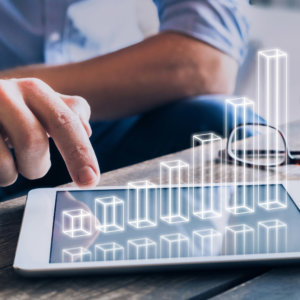Unlocking the Value of Augmented Reality Data
Augmented reality sensors’ context-rich data allows businesses to connect the dots and build better products and processes.
Topics
Frontiers
The word “sensor” has become inseparable from the internet of things (IoT), where sensors detect environmental conditions and communicate these signals bidirectionally as data, whether it’s an industrial machine reporting its operating condition or your home thermostat being turned on remotely. This data is a key driver of the IoT’s global economic impact, which McKinsey estimates could reach up to $11.1 trillion per year by 2025.
Before the IoT, the two key functions of a sensor — to detect environmental change and to communicate that data — were largely carried out by humans. Today, as augmented reality (AR) technology gains adoption, humans will soon be equipped with sensors through various AR devices, such as phones and headsets. This augmentation provides uncharted opportunities for organizations to use these data insights to drive operational effectiveness and differentiate their products and services for consumers.
The AR market today is similar to where the IoT market was in 2010, generating considerable buzz and proving early value from new capabilities for users. AR’s capacity to visualize, instruct, and interact can transform the way we work with data. Based on the lessons learned in the early days of the IoT, enterprises should be asking the question: What’s the best way to plan for AR device data and see its value, so we can build better products and processes from user insights?
Smart, Connected Reality Means More User Data
As we do that planning, there is much to learn from our recent, connected past. The 2007-2008 iPhone and Android market releases provided significant data about how customers engaged with their brand, and it gave engineers new insights into user requirements. This market disruption flipped the value proposition — applications could sense and measure customer experience in conjunction with delivering it, and it opened the door to subscription- and use-based services. With similar sensing capabilities emerging through the IoT for physical products, companies quickly built in connectivity, giving rise to smart, connected products (SCPs) that make up the internet of things. The data arms race and the emergence of the data economy has been disrupting technology laggards ever since.
Get Updates on Leading With AI and Data
Get monthly insights on how artificial intelligence impacts your organization and what it means for your company and customers.
Please enter a valid email address
Thank you for signing up
Considering these proven market dynamics, the potential for AR-as-a-sensor being the next-generation modality for gathering rich data is profound.

